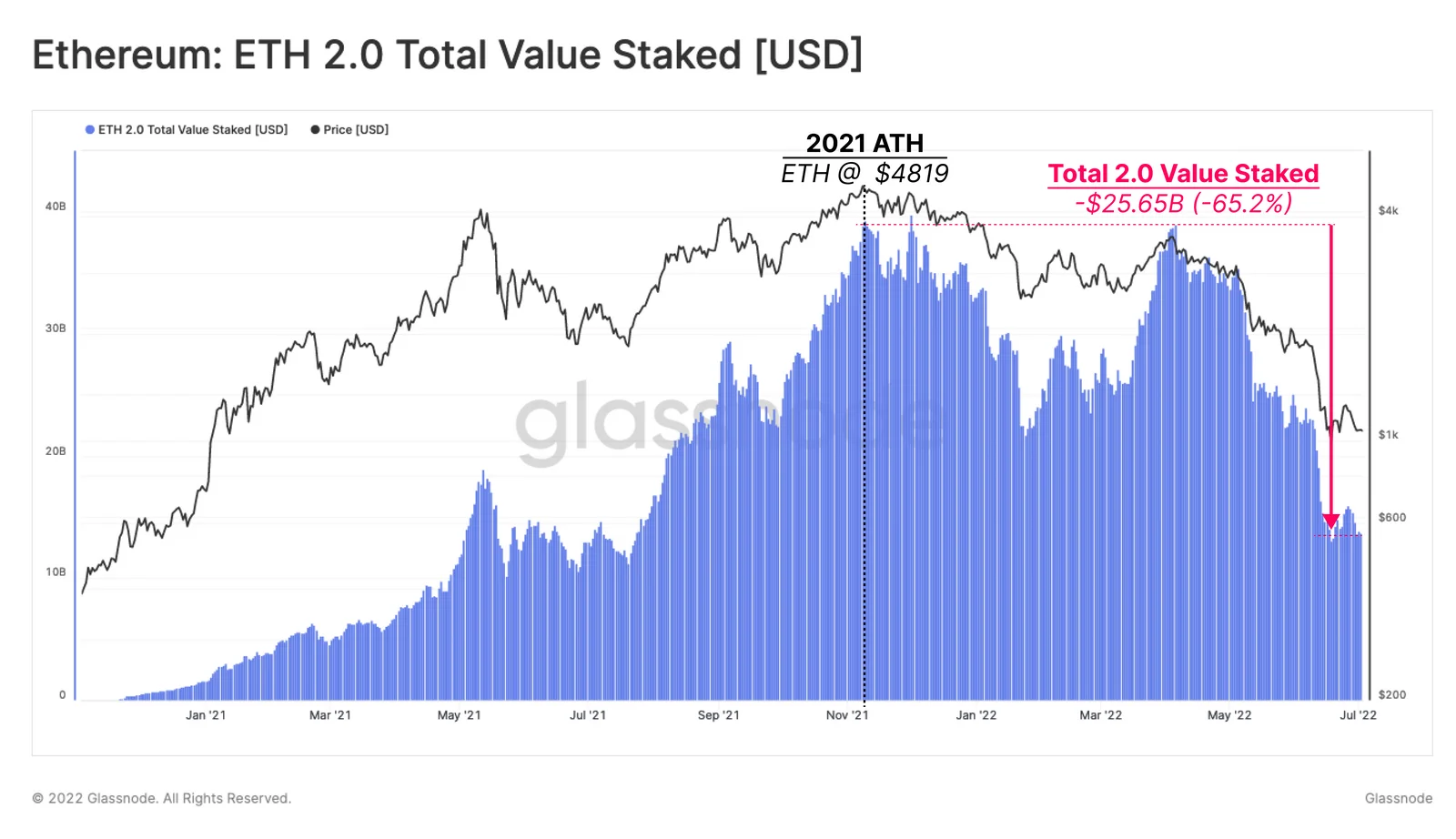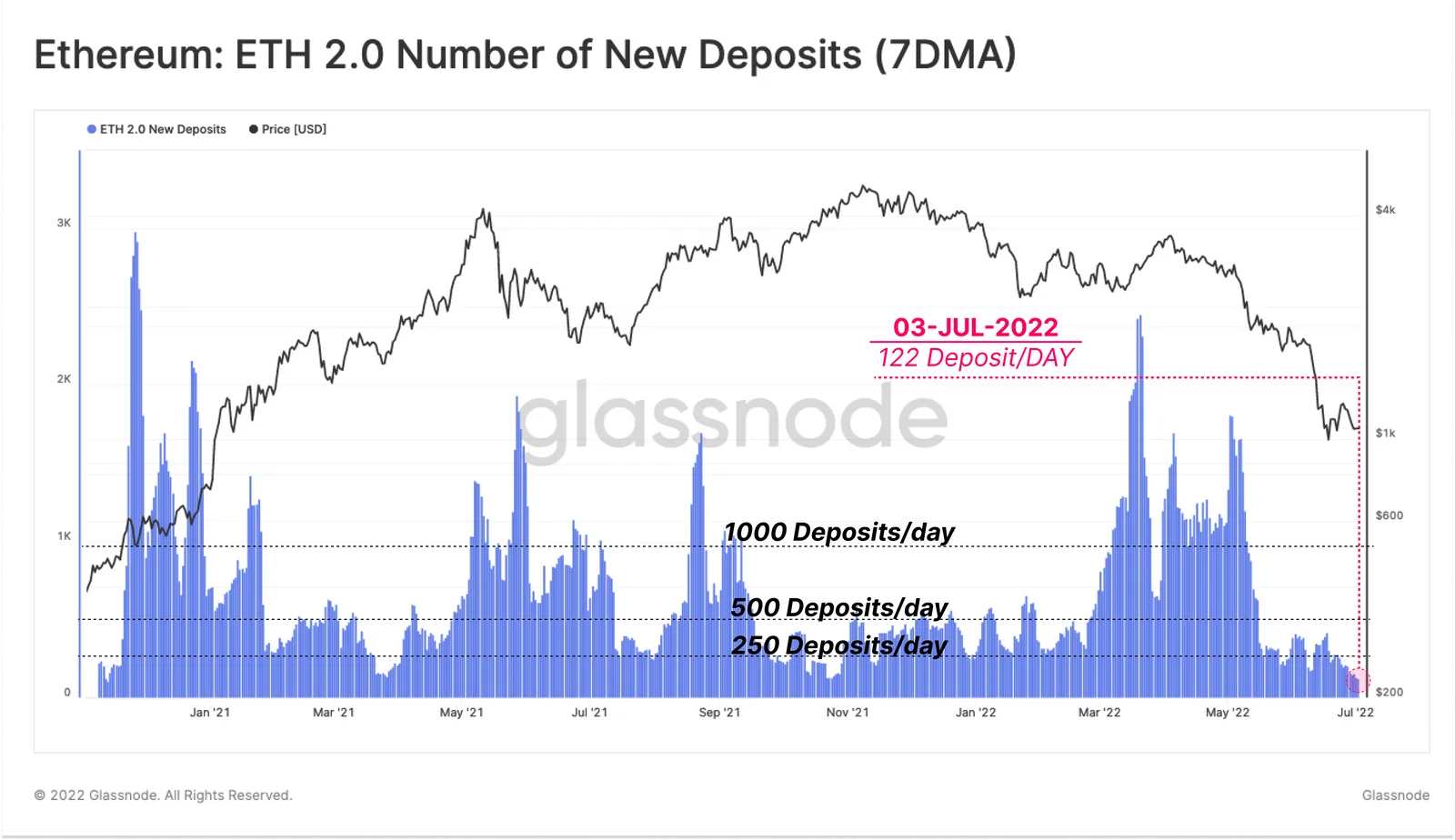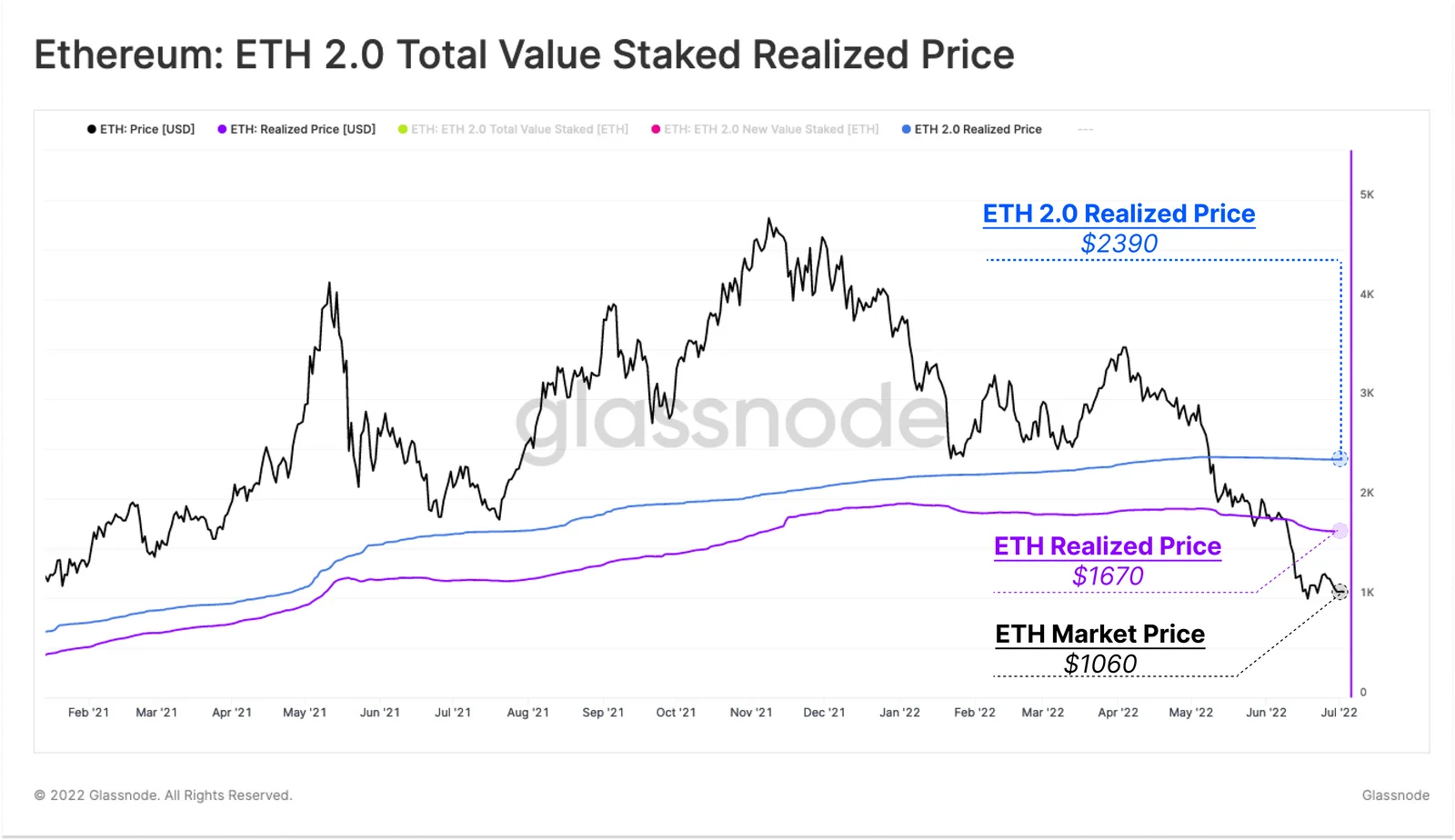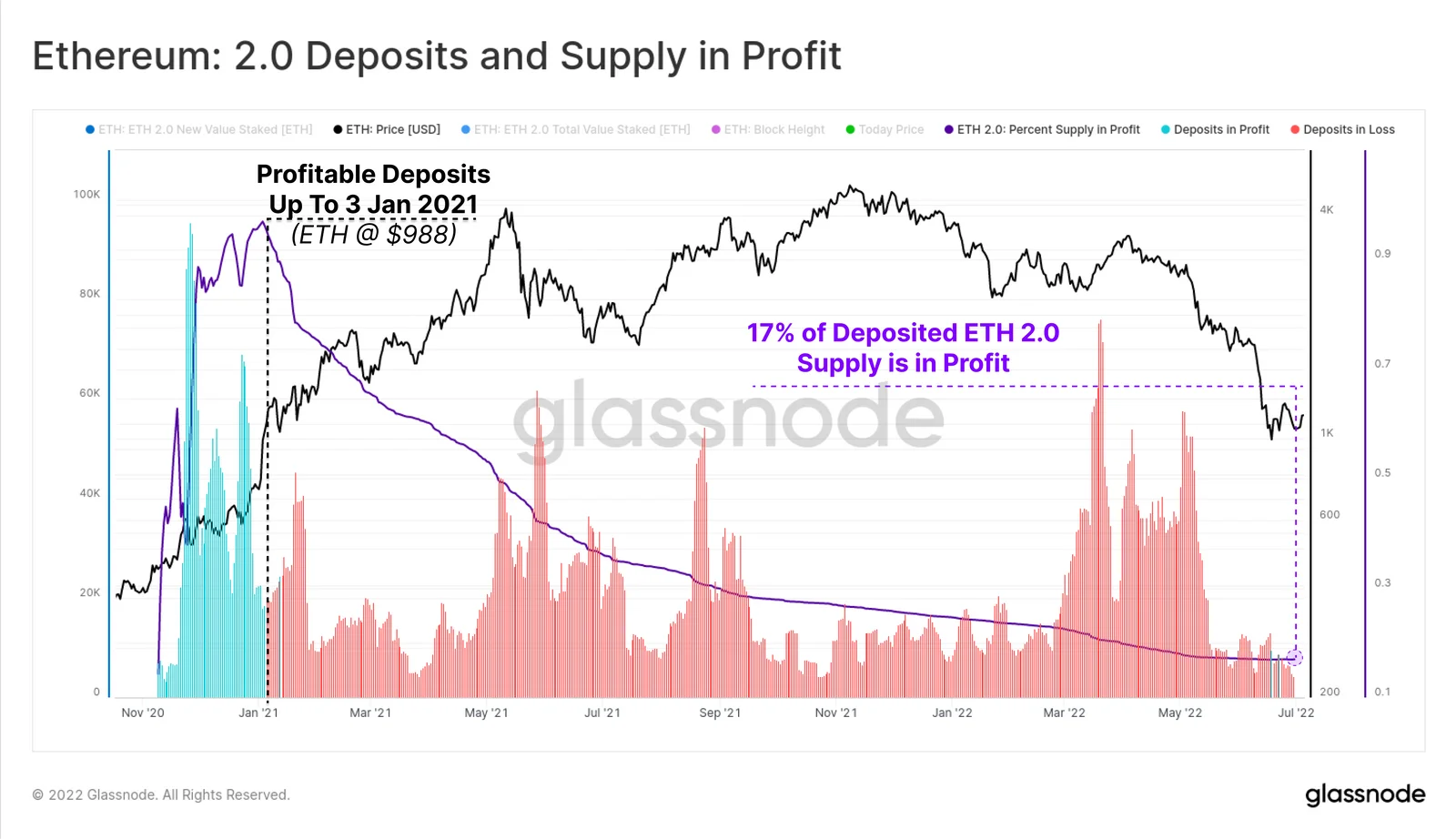Most Ethereum 2.0 investors are in losses. What is happening in the market
Crypto winter has hit the pockets of investors whose coins are blocked in PoS contracts of Ethereum 2.0 test network

11.07.2022
895
5 min
0
Ethereum's transition to a new consensus algorithm can be called one of the most anticipated events in the crypto industry. From December 1, 2020, investors have been able to stake ETH on the test network with the prospect of becoming a validator after the transition to Ethereum 2.0. However, the market decline and the inability to withdraw tokens locked into the contract are causing losses for most investors who bet on the planned network upgrade.
On July 6, the Sepolia test network successfully switched to the new Proof-of-Stake (PoS) algorithm for transaction verification, which is a system that is based on a network of participants who are willing to stake their ETH for a certain period of time. And Proof-of-Work (PoW), from which the upgrade came, involves miners competing to solve complex calculations to verify transactions.
Ethereum will switch to staking soon. What miners should do and how to earn in the new conditions
There are three testnets in the Ethereum ecosystem: Ropsten, Sepolia, and Goerli. The testnets are a copy of the main blockchain, in those networks tokens have no value. This allows you to try out new technology before it goes live on the main network. Goerli remains the last Ethereum testnet on PoW, the others have successfully migrated to the PoS algorithm. The upgrade is expected to make the network much faster and cheaper to use. Ethereum developers have been planning a move to PoS for years, but the process has been delayed several times. On May 17 at the Permissionless conference, one of the leading developers, Preston Van Loon, said that the upgrade, called Merge, would happen within the next 3 months, but no exact date was given.
To become a validator in Ethereum 2.0, you need to send at least 32 ETH per staking contract to the Beacon Chain, a ledger of accounts that maintains and coordinates a network of participants. It does not process transactions and does not interact with smart contracts. Validators are active participants in the network that verify transactions and mine new token blocks in the network. A validator can work alone or through a pool (e.g., Lido, Rocket Pool).
Current investors will become validators after the Ethereum core network is upgraded. They will receive a reward in ETH depending on how much they sent in staking and how long they participated in validating transactions on the network.
Despite the potential benefit, investors who have deposited coins to work with the validator are in significant disadvantage due to the drop in ETH and are unable to withdraw funds from the protocol before the main Merge upgrade.
In a report published on July 6, Glassnode analyzed the total number of ETH sent to staking, the change in the number of new deposits per day, as well as the average ETH purchase price and the potential loss of investors.
There has been a steady influx of coins from investors wishing to become validators since the developers launched the Beacon network in November 2020. The total number of ETH blocked has now reached 12,98 million, representing more than 10,9% of the circulating supply. 62% of this amount was sent before the asset's November 2021 all-time high (ATH) price, and the remaining 38% was sent afterwards. At the November ATH, when ETH was worth $4819, the total value of staked deposits reached $39,7 billion, corresponding to 263 918 network validators. After ATH, however, the value fell by $25,65 billion. Despite the market drop, investors sent about 5 million more ETH to staking, and the number of validators increased to 406 047 units.

When ETH prices fell below the 2018 ATH level, Ethereum 2.0 deposits slowed noticeably. During 2020 and 2021, there were typically 500 to 1 000 new deposits of 32 ETH each day. Currently, the average number of deposits has dropped to 122 per day.

Since deposits cannot yet be withdrawn, we can calculate the average value of ETH 2.0 at the time of deposit (the so-called realization price). To do this, the sum of all ETH deposits multiplied by the ETH price at the time of deposit must be divided by the total amount of ETH in staking.
With the resulting realization price of $2390 per ETH and an ETH rate of $1060 as of July 6, most investors who bet on Ethereum 2.0 have an average loss of 55%. If you compare that to the realized price for the amount of ETH that investors have deposited all along, the losses are 36%. The conclusion from this is that all Ethereum 2.0 deposits making profits were made back in January 2021, when ETH was worth less than $1000. That is, only 17% of the total number of deposits are profitable.
Another reason for the slowdown in deposits could have been the low yield of ETH 2.0, which is decreasing due to the growth of new coins in staking. As of today, it is only 4,2% according to the staking platform EverStake.
It can be concluded that investors who used liquid derivatives such as Lido (stETH), with the ability to sell them on exchanges, were probably better at hedging downside risk. This explains the high demand for derivatives, along with the ability to use as collateral in DeFi applications.
Useful material?
Articles
How the largest cryptocurrency exchange’s initiatives help it maintain its leadership
Nov 19, 2022
Articles
What fan coins are needed for and what events contribute to their growth
Nov 16, 2022
Articles
Why Binance set the trend to publish transparent data on available funds
Nov 14, 2022
Articles
The journalists got acquainted with the documents revealing the details of the financial condition of the exchange
Nov 13, 2022
Articles
Desperate traders with stuck assets resort to semi-legal schemes to save deposits
Nov 11, 2022
Articles
Experts predict when to expect new peaks of the crypto market by analyzing its previous cycles
Nov 10, 2022











 Telegram
Telegram  Twitter
Twitter